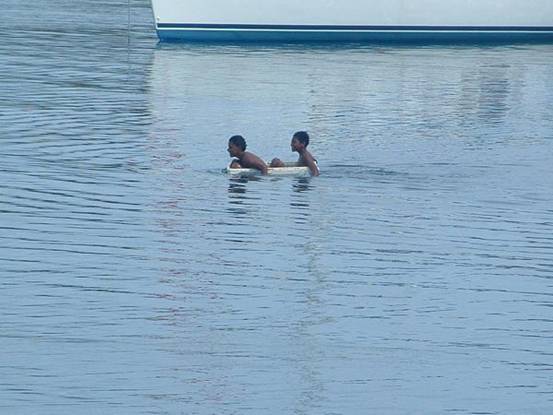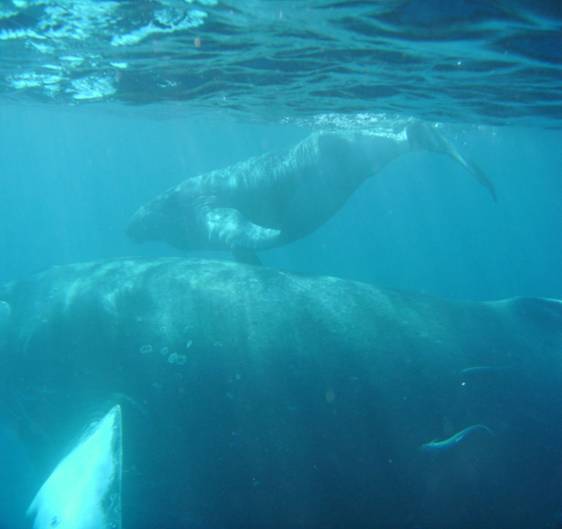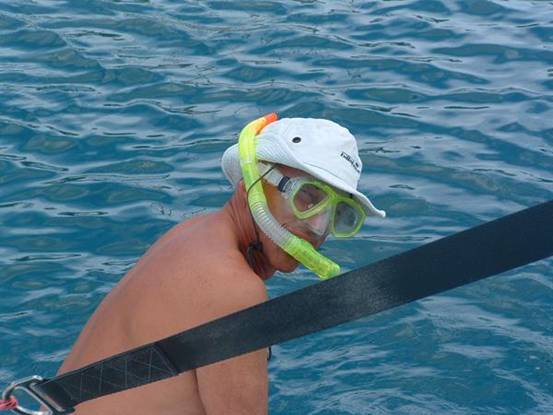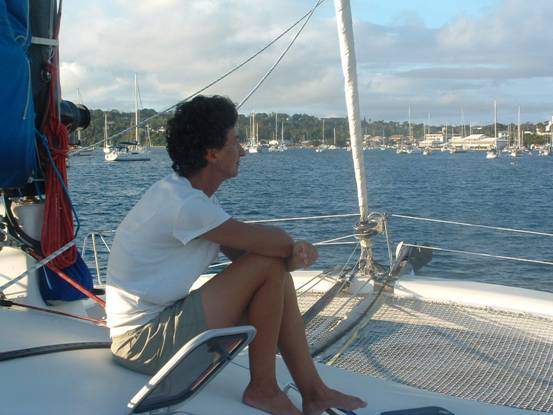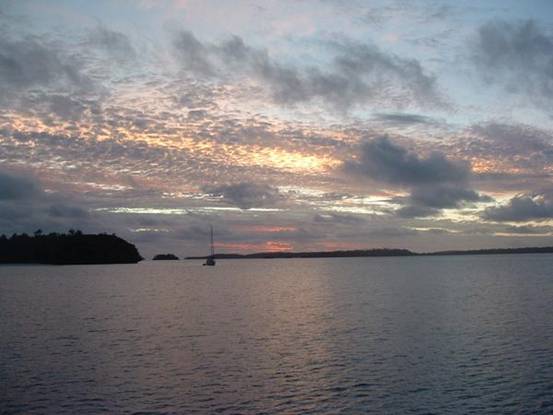TONGA AND THE TRIP SOUTH TO NEW ZEALAND

|
Tonga and the trip south to
New Zealand The
two most noticeable aspects of the trip from Niue to One
final squall was to be avoided before we entered the island-strewn Vava’u
archipelago and headed up to the main town of We
were going to spend some time in the Vava’u group, the main sailing area.
Friends form Neiafu is the ‘Clapham Junction’ of trans-Pacific
sailing. After Tahiti boats take various routes through the After the sophistication and relative wealth of French
Polynesia, and even of the Cook Islands and Niue (heavily supported by New
Zealand), Tonga is definitely third world, but no less charming for that. It’s a
bit scruffy, the infra-structure is not so great and services somewhat
haphazard, but the local people are friendly, if a little reserved, and the
islands are beautiful. Due
to the concentrated yachtie population there is a good selection of cafes, bars
and restaurants, along with many other support businesses – almost all run by
ex-pats from all over the world, who usually washed up here on a yacht sometime
ago and decided to stay.
Tongan kids at
play, using a polystyrene fish box as a dinghy Restaurants with names such as the ‘Dancing Rooster’
(owned by Gunter from Neiafu is pretty much a one street town, with a few
churches, a couple of schools and a number of shops that don’t sell much and a
lot of pigs, usually just wandering along the road. One
of the ‘must-dos’ on Vava’u is whale-watching. Humpback whales come to the warm
sheltered waters around the islands in large numbers to mate and then, a year
later to give birth and rear their calves. When David and Kay arrived we booked
a day on a dive boat to go and see, and hopefully swim with these huge,
magnificent creatures. We were getting to the end of the season, but hoped there
would still be some whales around. We needn’t have worried. Paul our guide found
8 Humpbacks, some of which performed beautifully, breaching (leaping virtually
out of the water and returning with an almighty splash, repeated tail-slapping
(that’s the tarty females) and even a pair that decided on synchronised
fin-slapping for our entertainment. However none appeared to want to hang around
long enough for us to get in the water (fully-wet-suited up and ready to go at a
moments notice) and swim with these leviathans. Although wonderful to see these
magnificent beast it did look as though we were going to be frustrated in
getting close up in the water, until at the end of the day a mother and young
calve decided to slow down and give us a chance. Perched on the side of the boat
we awaited the call – ‘Go, go
.go’. We were in the water and swimming like mad following our guide towards the
whales. Suddenly beneath us loomed a huge fin, followed by an even huger body,
and then to cap it all the calf, only about 6 weeks old but already very big
(they suckle 50 kilos of milk a day) swam up past the mother towards us. Just
amazing! It only lasted a few minutes before the mother raised her head out of
the water for a final look at us and then elegantly dived deep with a final tail
flourish. The adrenalin was pumping and the excitement of being in the water so
close to there huge, gentle creatures was an experience never to be forgotten.
Back on the boat it was high-fives and smiles all round.
Very difficult
to capture, but the above photo shows two humpback whales enjoying a spot of
synchronised fin slapping!
A wave (sic)
goodbye We do not have
an underwater camera, so the following two pictures were taken by some friends,
and I have included them here just to show what it is like to swim with these
extraordinary creatures. Many thanks to Trish and Steve on s/y Curious for these
photos.
Over the next week, with David and Kay on board we
toured some of the many islands in the Vava’u group. The larger ones maybe had a
couple of small villages, but most were deserted with white sand beaches and
thick, forested interiors. We snorkelled off the best coral reef we had seen in
the Pacific and Kay beach combed for some beautiful shells. Unfortunately the
weather didn’t exactly play ball. Whilst hot there was little or no wind (we
only sailed twice in a week) and numerous downpours.
David about to
go snorkelling, plus hat!
David and Kay
on foredeck Then it was back to Neiafu, to say goodbye to David and
Kay and to re-provision and sort the boat out for the forthcoming trip to
We
had originally intended to spend some time sailing down through the Ha’apai
islands to Tongatapu and wait there for a suitable weather window for the
1100-mile passage to The
weather had been extremely unstable with Bob
McDavitt, a yacht-friendly We
checked out with the Tongan authorities and sailed round to a quiet anchorage to
wait for the wind to fill in from the south-east, which was the indication that
the inclement weather had passed and the trade winds were back.
Lucy, dreaming
of what? The anchorage at Neiafu, Tonga
Tongan
sunset The trip south On
the morning of Friday 22nd October, the anticipated change in the
weather arrived so at mid-day we up-anchored and set sail. For
the first couple of days we romped along on a reach, but with a pretty big swell
to keep things lively. On the third morning we noticed the part of the leach on
the jib (I’ll explain it to you later, Liz) had become unstitched. In order to
limit the damage we decided to part-furl the jib, but in doing so it flapped
once and the leach tape split all the way up! Now it was a case of saving the
whole sail so the jib was fully furled. We
were still making 8 – 10 knots under a reefed main alone, so progress was fine.
It continued that way until some 250 miles out from On
the 5th morning at about 6 a.m. the strangest thing happened: Lucy
had just gone off watch and was sleeping soundly. The wind had dropped to a
whisper and we were barely making 4 knots. I went inside to make a cup of tea.
When I returned to the cockpit to my shock and great surprise there was a man
sitting in the corner of the cockpit! How I didn’t drop my tea I’ll never know.
He was very deeply tanned, wearing long lycra-type silver-black pants. He was
wet all over and had obviously just got out of the sea! He lay back in the
corner of the cockpit in the early-morning sun with his eyes closed. He had long
black hair, a large aquiline nose and very rugged features on a very fit body.
He seemed completely unaware of my presence. Not knowing what to say, and not
wishing to shock him as he had me, I coughed gently. Instantly his eyes opened
and he appeared fully alert. He looked at me through the most astonishing, huge
jet-black eyes I’d ever seen. I smiled and gestured towards him in an enquiring
way, but he just stared at me through those big eyes. It was as if he was
looking through me, not at me and it felt quite
intimidating. I
sat down on the opposite side of the cockpit. I really did not know what to do.
Who was he? Where had we come from? What did he want? I asked him a couple of
questions in English, which elicited absolutely no response. I tried the same
questions in French and Spanish, but still no reaction. He just continued to
stare at me. I
decided that my best course of action was to just sit and watch and wait. After
a few minutes he seemed to visibly relax and closed his eyes once again. I sat
patiently for about 20 minutes, before deciding I must have a look around. As
soon as I moved he was awake and alert again and gave me such a look as to
ensure that I kept my distance from him. Again I tried to smile reassuringly,
and again that was met with a blank, cold stare. I
sat down again and waited. After another half an hour or so the wind started to
get up, and we started to move once again at a decent speed. Suddenly, without
warning the man jumped up and walked quickly to the stern. He turned, raised his
arm, which was his one and only acknowledgement of my presence, and dived into
the water. I
rushed to the back of the cockpit but there was no sign of him. Should I stop
the boat? Should I call ‘man overboard’ (explain that to Lucy!). I did nothing
and carried on our course. Why? Well, I knew, you see. When he raised his hand in
that final wave I noticed that between each finger, almost to the tip of the
digit, was a fine brown web of skin! Lucy awoke an hour or so later and coming on deck said
that she had the strangest dream. It was as if I was talking to some one else on
the boat. Definitely time to get to The
rest of the trip was uneventful and it was wonderful to see the coast of
We
motored the last few miles through the What joy, being able to just step off and on the boat at
will without the need of a dinghy ride, for the first time in 6 months. Everyone
made us most welcome especially the Opua Cruising Club. The
most surprising aspect of the trip south from Our
first impressions of |
